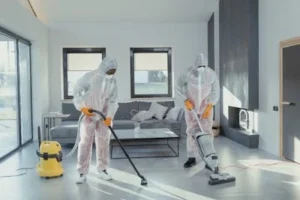Workers Compensation Class Code
Understanding workers compensation class code for cleaning is critical in running a cleaning business. These codes dictate what you pay in insurance and protect your employees if there is an accident or injury on the job. This article focuses on workers’ compensation class codes for cleaning services, explaining their significance to your business.
Workers Compensation Class Codeurities
A workers’ compensation class code is a numerical coding system used by state authorities to classify businesses on the basis of their different industries and the hazards they are exposed to. There are classifications in place for the type of work a business is engaged in and these codes assist insurance companies to determine what rates should be charged based on this. The crisper, the less artful variation or deviation you have to execute in order for your autonomous vehicle system design to work, means that it overall is safer and thus incurs a lower premium. Class codes for cleaning services have been created to fill a slice of the pie that also does its best to insulate employers from many (or all) risks typical with janitorial work.
Why class codes are crucial for cleaning businesses?
Class codes are important because:
- Insurance line Calculation
How workers class code impacts your insurance premium Jobs that are considered as high-risk have higher premiums.
- Compliance
More states than ever are mandating businesses have workers comp insurance. Knowing your class codes can be helpful to make sure you are compliant with the state.
- Risk Management
By identifying the concerning risk challenges that comes with cleaning jobs, you will be able to establish better safety protocols to eventually reduce your insurance cost.
Cleaning (Common Workers Compensation Class Codes)

There will be a few types of class codes for cleaning businesses, based on the state you are operating in. Here are some common ones:
Class Code 9014 – Janitorial Services
The most common use of this code is for companies engaged in general cleaning services (including office and building maintenance) as well as any related operations.
Class Code 9101 – Building Cleaning and Maintenance
This class code is an optional phrase that applies to businesses engaged in activities of cleaning buildings by size may include larger washing operations.
- Class Code 9082 – Window Cleaning
- As suggested by the title, this class code applies if you only clean windows.
- Code 9141 – Carpet and Upholstery Cleaning
- This is applicable for businesses focusing on carpet cleaning or upholstery laundering.
- Class Code 9510 – Housekeeping
- This is the code for businesses engaged in housecleaning services, most particularly at hospitality establishments.
Determining Your Individual Class Code
It may be a bit tricky trying to find out your actual class code, just it doesn’t have to a majority of the time. Here’s where you can reach out in:
- Speak to your Insurance Agent
An insurance agent can walk you through the process of classifying yourself into a specific category based on what exactly it is that your company does.
- Look Up Your Class Code
You will likely be to search your class code on an online resource or within a state manual, so check out what is available in the area you may receive coverage.
- Check Your Policy
If you currently have workers’ compensation insurance coverage, your class code will be included in the policy documents.
Cleaning Industry Associations
Finally, one last way to determine proper class codes is by joining cleaning industry associations which can provide guidance and resources around what are the appropriate classifications.
Class Codes and their effect on Insurance Premiums
What class code you fall under directly affects how much for workers’ compensation premiums. A Particular Focus on How It Works
Class Code Risk Assessment
Insurance companies evaluate the risk of your class code. This will mean that window cleaning as a service is deemed to be higher risk (i.e more likely there could be safety incidents involving falls), so insurance rates would in general become pricier for this part of the operation than standard janitorial services.
- Loss History
This is a factor we mentioned above, an account with recurring claims within its class code over time will result in higher premiums as this indicates risk.
- Training and Safety
Instituting safety training programs can also shorten the list of claims and potentially lower premiums. Safety Conscious Business Discounts from Insurance Providers.
Cleaning Workers Compensation Best Practices

Here are some tips on pest and wildlife management you can use for your cleaning business:
- Employee training
Investing in employee safety and proper handling of equipment, as well as dealing with emergencies can reduce workplace injuries significantly.
Do Safety Audits at Regular Intervals
Keep evaluating your workplace to uncover possible threats and address them as soon as they arise.
Implement a Reporting System
Encourage workers to report any hazardous condition or occurrence that might avoid future events.
- Stay Informed
Changes in regulations and class codes can drastically change your insurance premiums, or impact compliance.
- Select the Appropriate Insurance Carrier
Establish coverage with an insurance carrier that is knowledgeable about janitorial. These professionals help you wade through class codes and locate the superior coverage for your company.
The Future of Workers Compensation for Cleaning Businesses

As technology in the cleaning industry has progressed, so too have the laws and rules that dictate workers comp. Few ideas to have an eye on:
- Investment in Employee Wellness
Businesses may start investing more heavily into employee health and safety programs, as this crisis has highlighted just how important it is to maintain effective precautions at the workplace. This concentration might cause fewer claims and healthier staff
- Technology Integration
Technology, including mobile-apps for incident reporting/safety training tracking is trending higher. This tools can help to improve the process and communicate with the workplace
FAQs
1. What happens if I enter the incorrect class code?
If your business is audited, you could face an overpayment if the class code produces a higher premium rate or end up in legal trouble.
2. Can I change my class code?
So, if your business is functioning in a way for classification different class code you can ask to reclassify it from the insurance company.
3. To review my class code: How soon?
You should make it a habit to conduct your class code study once every year or whenever the business operations change drastically.
4. What Can Happen If You Don’t Have Workers ‘Compensation?
These penalties may vary by state, but in general they could include fines and legal consequences as well as exposure to medical expenses if you have an injured worker.
Conclusion
For cleaning businesses, knowing and managing workers’ comp class codes is crucial. With the exact class code in mind as well as some of our best practices, you can set your business up to be compliant with state laws that protect your employees but also allow for cost management. In this way, investing in safety and training right now will ensure your cleaning business a serviceable future. If you want to know more about us than click here:
Difference table of the Content
| Aspect | Explanation | Impact on Business |
|---|---|---|
| Workers Compensation Class Code | A numerical code used to categorize businesses by industry and risk. | Determines insurance premiums; helps with regulatory compliance. |
| Importance for Cleaning Businesses | Codes impact premium costs, compliance, and risk management. | Helps avoid penalties, ensures adequate coverage, and may reduce costs through better risk management. |
| Common Class Codes | – 9014: Janitorial Services – 9101: Building Cleaning and Maintenance – 9082: Window Cleaning – 9141: Carpet & Upholstery – 9510: Housekeeping |
Selecting the correct code ensures accurate premium costs and compliance with insurance requirements. |
| Determining Class Code | Options include consulting an insurance agent, using state resources, reviewing current policies, or joining associations. | Ensures the business is correctly classified, which affects costs and reduces audit risk. |
| Premium Determinants | Based on risk level of assigned code, claims history, and safety measures. | High-risk activities like window cleaning lead to higher premiums; fewer claims and better safety protocols may lower rates. |
| Best Practices | Employee training, regular safety audits, hazard reporting, and staying updated on regulations. | Proactive safety measures can reduce incidents, which lowers insurance costs and enhances workplace safety. |
| Future Trends | Increased focus on employee wellness, technology for safety tracking, and incident reporting. | Technology adoption and wellness initiatives can streamline compliance and potentially reduce premiums by reducing incidents. |

[…] all Miracle Sealants products safely, please read the Safety Data Sheet. If you want to know more about us than click […]
[…] can maintain your septic tank working satisfactorily for years to come. If you want to know more about us than click […]